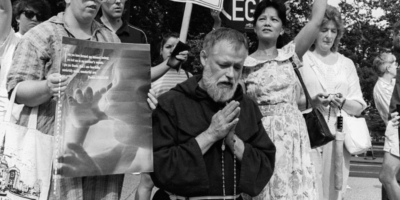A Stein Is a Stein Is a Stein
Sister Brother: Gertrude & Leo Stein by Brenda Wineapple G.P. Putnam’s Sons, $35
Gertrude Stein’s America by Gertrude Steir, edited by Gilbert A. Harrison W.W. Norton and Co. Inc., $10 paperback
Among the writers, painters and intellectuals who made Paris. their home in the first part of the20th century, Gertrude and Leo Stein were at the hub. Assimilated American Jews, and siblings, they are also at the heart of Brenda Wineapple’s exhaustively researched Sister Brother. “They bought pictures, not lavishly, but with prescience and true passion, and soon their apartment was a fulcrum for the movement known as modernism,” Wineapple writes. Thanks to a trust fund managed by their oldest brother, the two were able to savor what Wineapple calls “the privilege of a sufficiently financed life.”
Leo, an intellectual dilettante who had dabbled in biology, law and literature, went to Paris at the turn of the century and took up painting and drawing. He quickly realized, however, that his inclinations lay less in his own artistry than in the appreciation of others’. Having dropped out of medical school, Gertrude anived in 1903, eager to be swept up in the movements that had captured her brother’s imagination. She was also ready to come out as a lesbian.
Gertrude and Leo loved nothing more than a house full of guests debating the latest trends and ideas. From the “new woman” to psychoanalysis to nutritional fads to Cubism, Wineapple presents a house rattling with argument and laughter. Yet she is also attentive to the dynamics under girding the Steins’ relationships.
The Steins of Wine apple’s book are a complex clan riddled with resentments. Leo was withdrawn and afraid of confrontation, torn apart by sexual inadequacies and immense jealousies. He reportedly found it excruciating to commit his thoughts to paper, instead spending hours brooding, fasting and in meditation. By contrast, Gertrude had come into her own by 1910. Not only was she in a loving relationship with Alice B.Toklas, but her writing-long ignored by pub them—was finally being lauded in the literary community. Unlike Leo, who rarely expressed his feelings, Gerturde was given to condescension toward family and friends and regularly cut people out of her life. In fact, “she severed relations with more than one sibling and most of her family, banishing old and some new friends with a peremptoriness both startling and bold.”
But none of the schisms was as abrupt—or as devastating—as the one between Gertrude and Leo. The reasons for the break are not clear, but Wine applepos its a number of contributing factors, from the pair’s continuous but unspoken competition to Gertrude’s “defection”— over Leo’s objections—to the new work of the prolific and sexually vital Picasso. Gertmde and Leo—once so inseparable that many had suspected incest—never spoke after 1914. Gertrude died in 1946, Leo in 1947.
Wineapple’s research reveals a world of upper-class pretensions co-existing with bohemian sensibilities, a world where assimilation was perceived as a necessity and religious observance a relic of the past. Many considered Toklas anti-Semitic and were not surprised when this American-born Jew converted to Roman Catholicism in 1957. But Gertrude was different; for her, Judaism was a given. Indeed, it was Stein’s outsider status—as a woman, a lesbian, and an expatriate American Jew—that encouraged her muse.
“Everybody, that is, everybody who writes, is interested in living inside themselves in order to tell what is inside themselves. That is why writers have to have two countries, the one where they belong and the one in which they really live,” she wrote in Gertrude Stein’s America, a recently re-released collection of well edited excerpts about American identity and an excellent companion to Sister Brother: “The second one is romantic, it is separate from themselves, it is not real but it is really there.”
Eleanor J. Bader is a writer and teacher from Brooklyn, NY.


